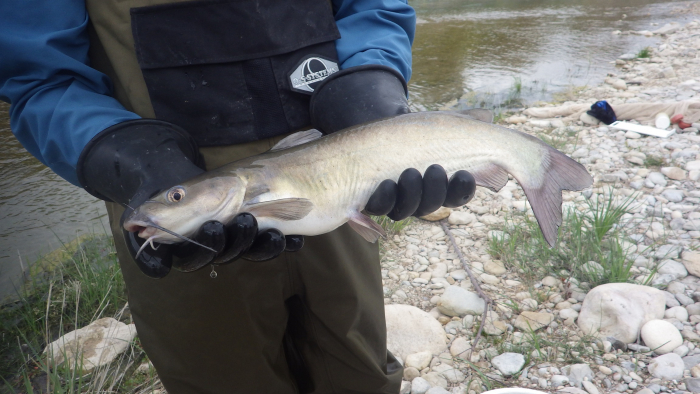Llano River fish population recovering after October flood

Contributed/TP&W
As Texas Parks and Wildlife launched post-flood event studies on area waterways, they discovered the most abundant and diverse populations of fish on the Llano River near Junction.
Special to The Highlander
After finding more than 18 species of fish during a recent sampling trip on the Llano River, the Texas Parks and Wildlife Department’s Inland Fisheries staff are encouraged to see fish populations rebounding following historic flooding in October 2018.
“In 2018 the Llano River was greatly affected by a 100-yr flood that significantly altered its fish habitat,” said John Botros, TPWD River Access Program Coordinator. “Many anglers and local landowners expressed concern to us about the status of the fish population following this catastrophic flooding. While the abundance of fish in the river is lower than it was before the flood, we are happy to report that fish populations are showing signs of recovery.”
During a multi-day sampling trip with the Llano River Watershed Alliance in March 2019, staff used standard fish sampling techniques to assess the fish population on four stretches of the Llano River primarily near the department’s leased public fishing and boating access sites. Although fish were caught throughout the river, biologists found a significant difference in abundance and diversity between the main stem of the Llano River and the South Llano River near Junction.
“The most abundant and diverse populations of fish were found on the stretch of the Llano River near the city of Junction and on the South Llano River,” Botros said. “This stretch appears to be less affected by the flood. We caught multiple species of minnows, suckers and game fish, including largemouth bass and our state fish, Guadalupe bass. Anglers visiting the area this year will likely have higher fishing success focusing on this stretch of the river.”
On the main stem of the Llano River upstream of Castell to Schneider Slab Rd (CR 103) in Llano County, biologists found fish abundance to be much lower than upstream near Junction. Botros said although few game fish were caught – mostly largemouth bass – the fish were considerably larger than those caught from the South Llano River.
“Although fish abundance on the mainstream Llano River appeared low, this was to be expected since a near-historic flood occurred only a few months prior,” Botros said. “Fish tend to be displaced during large flood events, and it takes time for them to repopulate. Flooding is a natural part of river systems and the fish that live there are adapted to handle it; however, it may take a couple of years for populations to return to pre-flood conditions after a flood this large. Spring and early summer is when the bass and catfish in Llano River spawn, so we expect juveniles produced by these remaining adults will bolster populations throughout the river by this fall.” . . .
Find this story and more features in the Tuesday, April 23 issue of The Highlander, the newspaper of record for the Highland Lakes. To offer a comment or news tip, email lew@highlandernews.com.






